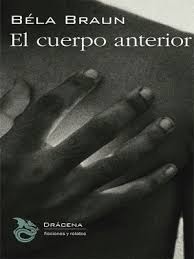
Original Language: Italian
Títutulu Original: The forgotten massacre
Year of publication: 1984
Translation: JUAN CARLOS GENTILE VITALE
Valoración: quite recommended
Historical essay with which the remembered Andrea Camilleri put himself in “Sciascia mode”, so to speak, in one of the first books he published (a few years before he obtained his great international success with the police novels, so we can collect where his literary career could have gone, if the circumstances had been other). This brief book would be, then, in the line of THE THEATER OF MEMORY And above all, The stabbersthen, like this, it deals with a lucrative and more or less forgotten fact, even by historians, occurred in the nineteenth century. Only that instead of an attack in Palermo, we were faced with a massacre produced in early 1848 in the hometown (today city) of Camilleri, Porto Empedocle, which at that time was a port that belonged to Agrigento and that was called Borgata Molo (by the way that very funny, by full of irony and even with retreat, it is the chronicle that the author of the different names is The centuries his town.
Between January 25 and 26, 1848, a revolt occurred in the town, framed within the Sicilian antiborbonic revolution (and that we can relate, in turn, with the revolutionary wave that toured that year all of Europe), during which the large 114 prisoners he had locked in a pit, when cutting the air supply. Decision made, for contextualizing it a bit, during the siege that many inhabitants of the place and relatives of the prisoners had put to the tower, but that is still a savage of the result of the result.
Camilleri offers us a tour not only for the events of that moment, but the background – with special interest in what the life of prisoners was and as the local bourgeoisie took advantage of the captive work … less bad than those things no longer happen, right? – and, above all, of what happened later, when the consequences are blurred in a fog of inaccuracies, rumors and silences that he tries to specify with a fine (Sorry to repeat me), of the most “Sciasciana.” In the end, there is a small essay that reads in one afternoon, the most interesting and that perfectly illustrates the famous Maximum of Lampedusa (or the Prince of Salina, rather) that “everything changes so that everything remains the same” …
Use: The reason why it was decided to put on the deck of a book on a killing of prisoners in the Sicily of the mid -19th century is the portrait of a Belgian young woman from the seventeenth century (although it is true that destiny editions has sometimes used other pictorial works of the past to wrapping Camilleri books); In any case, that has helped me to meet Michael Sweerts, a flamenco painter who made portraits of excellent invoice, as seen.
Many more books of Great Andrea Camilleri (but much less than he wrote) reviewed here.
Source: https://unlibroaldia.blogspot.com/2025/06/andrea-camilleri-la-masacre-olvidada.html


